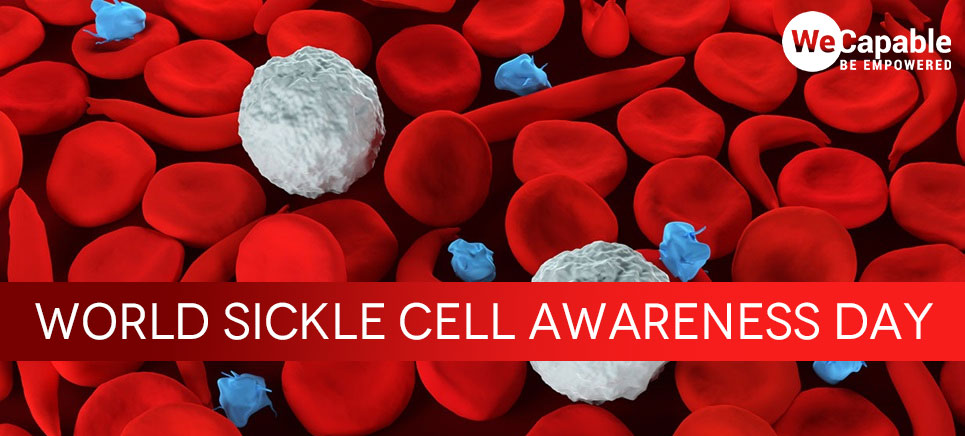19 June is the day for raising awareness about sickle cell disorders – a group of diseases that causes the blood cell to distort and break down resulting in anemia. The day is recognized by the United Nations. Therefore, it is observed nationally as well as internationally all over the world. The resolution for the observing the World Sickle Cell Awareness Day was passed in UN General Assembly on 22 December 2008.
What are Sickle Cell Disorders?
Sickle cell disorders are a group of diseases that affects our red blood cells that carry oxygen. The red blood cells that are normally round and flexible become stiff and sickle-shaped in sickle cell disorders. This deformation of the red blood cell restricts its smooth movement and drastically reduces its oxygen-carrying capacity. This does not only result in a lack of oxygen in the body but also causes episodes of severe pain.
Sickle cell is a genetic condition — that means the disorder is passed from parents to the child. If someone is not born with the condition she cannot acquire it from someone else. The disorder can lead to several health conditions like –
- Stroke
- Acute Chest Syndrome
- Blindness
- Bone damage
- Swelling of hands and feet
- Frequent infections
- Delayed growth or puberty
- Damage to important organs like kidney, heart, liver, lungs and spleen
- Priapism

Symptoms of Sickle Cell Disorders
- Chronic Anemia – As red blood cells get distorted and cannot normally carry oxygen to different parts of the body it causes chronic anemia in persons affected with sickle cell disorders.
- Unpredictable Pain – The sickle cell disorders result in episodes of severe pain also referred to as sickle cell crisis. These unpredictable pains are so severe that the person requires very strong painkillers to get relief.
- Constant Fatigue – People with sickle cell often complain of constant fatigue or tiredness. They feel weak due to anemia.
- Jaundice – As sickle cell disorder causes anemia the patient may show symptoms of jaundice – yellowing of the white area of the eyes, nails and skin.
Treatment of Sickle Cell Disorders
The treatment of sickle cell disorders is normally focused on preventing, managing and treating the complications caused due to the disorder. The only possible cure for the disorder found to date is the transplantation of the bone marrow. The treatment however is possible only for a few affected individuals who may find a suitable donor. In the case of the rest of the affected people, only the pain is managed with high-power painkillers.
Prevention of Sickle Cell Disorder
A very important fact about sickle cell disorder is that it is inherited from both parents. Sickle cell traits can be inherited from one parent. Having sickle cell trait means that the person has some sickle-shaped RBC under some circumstances but this does not affect the person’s health. People with sickle cell traits do not get any of the symptoms of the disorders.
But, the person with sickle cell trait needs to be careful while planning a child. If both the partners have sickle cell trait there is a 25% chance that any child conceived may have sickle cell disorder and a 50% chance that the child would have sickle cell trait. If only one partner has sickle cell trait then none of the children will have sickle cell disorder but there is a 50% chance of the child inheriting the sickle cell trait.
Use the citation below to add this article to your bibliography
"World Sickle Cell Awareness Day." Wecapable.com. Web. June 6, 2025. <https://wecapable.com/world-sickle-cell-awareness-day/>
Wecapable.com, "World Sickle Cell Awareness Day." Accessed June 6, 2025. https://wecapable.com/world-sickle-cell-awareness-day/
"World Sickle Cell Awareness Day." (n.d.). Wecapable.com. Retrieved June 6, 2025 from https://wecapable.com/world-sickle-cell-awareness-day/

Leave a Reply